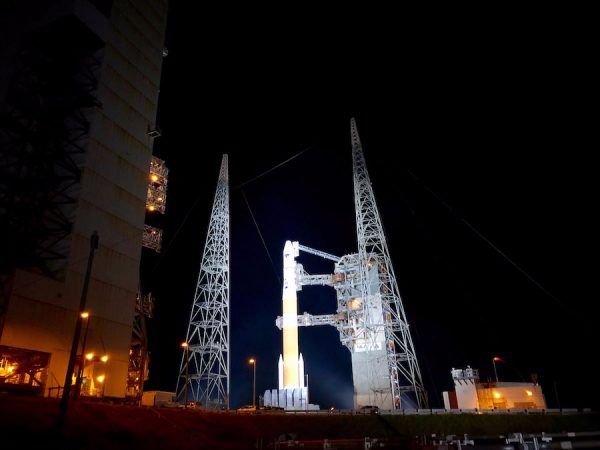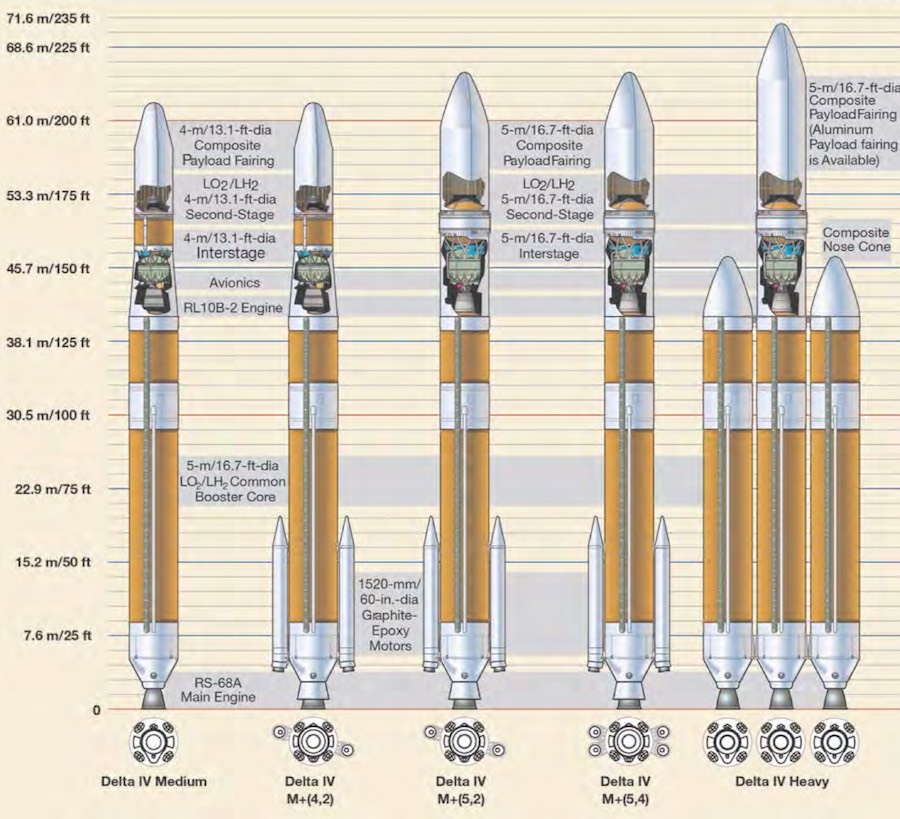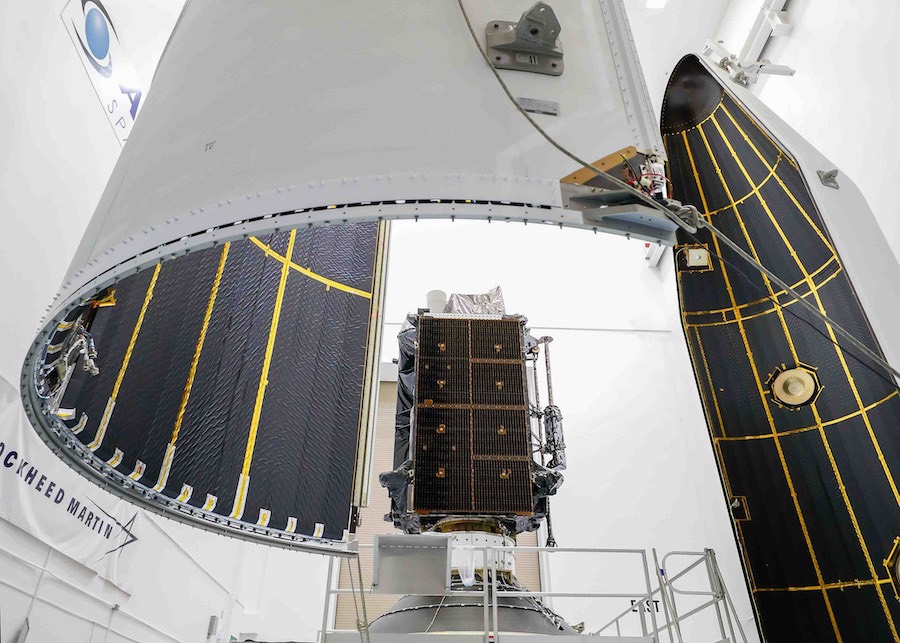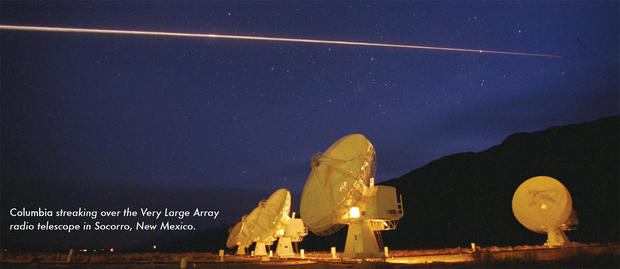ULA’s last Delta 4-Medium rocket set for launch Thursday – Spaceflight Now

United Launch Alliance is set to retire part of its rocket family Thursday with the final flight of the Delta 4 rocket’s “single stick” configuration, a mission set for liftoff from Cape Canaveral carrying a new GPS navigation satellite into orbit for the U.S. Air Force.
The Delta 4-Medium’s 29th and last flight is scheduled for takeoff from Cape Canaveral’s Complex 37 launch pad at 9:00:30 a.m. EDT (1300:30 GMT) Thursday. The launch window extends until 9:27 a.m. EDT.
There is an 80 percent chance of favorable weather for Thursday’s launch window.
ULA is phasing out the Delta 4-Medium as the company faces stiff competition from SpaceX for U.S. military launch contracts. The new Vulcan Centaur rocket, set for an inaugural launch in 2021, will be less expensive than than the Atlas and Delta rockets it will replace, according to ULA.
The Delta 4-Heavy rocket, made by combining three Delta 4 first stage cores together, will continue flying through 2023. ULA’s Atlas 5 rockets, which cost less than the Delta 4, will also remain operational through the early-to-mid 2020s.
“We made a business decision a few years ago that we would transition from the Delta 4 and Atlas vehicles over to a Vulcan Centaur, purpose-built to satisfy the entire mission suite, so it was time for us to phase out the Delta 4-Medium at this point,” said Gary Wentz, ULA’s vice president of government and commercial programs, in a pre-launch press briefing. “We don’t see any specific payloads that would require the Delta 4-Medium that we can’t fly on an Atlas 5.”
The Delta 4 launcher was originally designed and developed by Boeing. The Atlas 5 was conceived by Lockheed Martin.
The competing aerospace contractors merged their launch divisions in 2006, marking the birth of ULA as a 50-50 joint venture.
ULA’s launch team will load super-cold liquid hydrogen and liquid oxygen into the two-stage Delta 4 rocket during Thursday morning’s countdown.
The cryogenic propellants will feed the first stage’s RS-68A main engine and the second stage’s RL10 engine. Both powerplants are produced by Aerojet Rocketdyne.
The Delta 4 launching Thursday will fly in the “4,2” configuration with a 4-meter (13.1-foot-diameter) payload fairing and two strap-on solid rocket boosters built by Northrop Grumman Innovation Systems.

The RS-68A core engine will ignite at T-minus 5 seconds and throttle up for a computer-run health check. Assuming all systems are ready, the side-mounted solid-fueled boosters will fire when the countdown clock reaches zero to push the Delta 4 into the sky.
The main engine and solid rocket boosters will generate around 1.2 million pounds of combined thrust. Vectoring nozzles on the RS-68A engine and twin strap-on motors will steer the Delta 4 on a northeasterly trajectory roughly parallel to the U.S. East Coast.
The launcher will surpass the speed of sound in less than a minute, and the two 53-foot-long (16-meter) solid rocket boosters will burn out and jettison at T+plus 1 minute, 40 seconds.
The RS-68 core stage engine will shut down at T+plus 3 minutes, 55 seconds, followed by stage separation roughly seven seconds later. An RL10 engine on the Delta’s upper stage, also built by Aerojet Rocketdyne, will ignite for the first of two firings required to place the GPS satellite into an elliptical transfer orbit.
The Delta 4’s payload fairing will jettison in a clamshell-like fashion at T+plus 4 minutes, 26 seconds, once the rocket soars into the rarefied upper atmosphere. The shroud protects the GPS payload during launch preparations and the ascent through the lower layers of the atmosphere.
The RL10 upper stage engine will switch off at T+plus 13 minutes, 33 seconds to reach a preliminary orbit. Restart of the RL10 engine is planned nearly 67 minutes after liftoff for a three-and-a-half-minute burn to inject the GPS spacecraft into an egg-shaped transfer orbit ranging between 745 miles (1,200 kilometers) and 12,542 miles (20,185 kilometers) above Earth, with its orbital plane tilted 55 degrees to the equator.
The Lockheed Martin-built GPS satellite will separate from the Delta 4 launcher at T+plus 1 hour, 55 minutes.
The GPS 3 SV02 navigation satellite, nicknamed “Magellan,” will use its own engine to circularize its orbit and join the GPS constellation some 12,550 miles above the planet, where ground teams will test the new spacecraft and put it into service to replace an aging member of the constellation.
The GPS network provides positioning and timing services worldwide for military and civilian users, beaming signals relied upon by airliners, ATMs, drivers and smart bombs, among numerous other users.
“We’re committed to maintaining GPS as the gold standard of positioning, navigation and timing for all other systems to be measured against,” said Lt. Col. Maggie Sullivan, the Air Force’s GPS 3 program manager.
Thirty-one satellites are currently providing GPS navigation services.
The satellite set for launch Thursday is the second in a new generation of GPS satellites, providing more accurate navigation signals and boasting longer design lifetimes. The new GPS 3 satellites provide a new L1C civilian signal that is compatible with Europe’s Galileo network.
Other space-based navigation networks operated by Japan and China are also adopting similar compatible signals.

“Compared to the satellites in today’s constellation, this next generation of GPS satellites have three times greater accuracy, eight times improved anti-jam capabilities, and the new L1C civil signal compatible with other international satellite navigation systems like Galileo,” said Johnathon Caldwell, Lockheed Martin’s vice president of navigation systems.
“For those user equipment (providers) who elect to incorporate the L1C civil signal into their chipsets, those users will now have access not just to the GPS constellation but to Galileo and others who choose to then follow on with the L1C civil signal implementation,” Caldwell said. “So for users who are authorized to do that, instead of having just the legacy 31 points in the sky that you get from GPS, you’ll add on to it the ever-growing Galileo constellation.
“When it comes to finding out where you are, the more satellites you can see the better your position is.”
The first GPS 3-series satellite, named GPS 3 SV01, completed its post-launch checkout July 12 following an on-target deployment by a SpaceX Falcon 9 rocket last December, officials said. More testing is planned before GPS 3 SV01, named “Vespucci,” is ready to join the active GPS network.
“We’re excited now that the vehicle is through its on-orbit checkout and moving into the next phase of operational testing,” Caldwell said. “We expect that to begin later this year, and we’re looking forward to officially handing over the vehicle to the Air Force.”
Like the previous line of Boeing-built GPS 2F satellites, the GPS 3-series spacecraft will broadcast a dedicated L5 signal geared to support air navigation. The GPS 3 satellites also continue beaming an encrypted military-grade navigation signal known as M-code.
The M-code signal allows GPS satellites to broadcast higher-power, jam-resistant signals over specific regions, such as a military theater or battlefield. The capability provides U.S. and allied forces with more reliable navigation services, and could also allow the military to intentionally disrupt or jam civilian-grade GPS signals in a particular region, while the M-code signal remains unimpeded.
L3Harris Technologies builds the navigation payloads for the GPS 3 satellites.
Thursday’s launch is timed to place the GPS 3 SV02 spacecraft into Plane D, Slot 3 of the GPS constellation. That position is currently occupied by a GPS satellite launched in March 2003. Sullivan said the Air Force will make an “operational decision” on which aging GPS satellite, presumably in Plane D, the new spacecraft will replace.
The GPS satellites are spread among six orbital planes, each with four primary spacecraft, plus spares.
According to Sullivan, the GPS 3 SV02 spacecraft cost around $500 million. Future GPS 3 satellites will cost less, and officials target a cost of less than $200 million per spacecraft by time GPS 3 SV10 is ready for launch.
“The great thing about GPS is the volume of satellites,” Caldwell said. “You gain tremendous efficiencies when you have production volume, and you get commensurate cost reduction.”
Lockheed Martin is on contract with the Air Force to build up to 32 satellites, including 10 GPS 3 spacecraft and 22 upgraded GPS 3F satellites.
The next GPS mission, designated GPS 3 SV03 and nicknamed “Columbus,” is set for launch on a SpaceX Falcon 9 rocket in January. The satellite for that mission has already been declared available for launch, Air Force officials said.
Follow Stephen Clark on Twitter: @StephenClark1.






